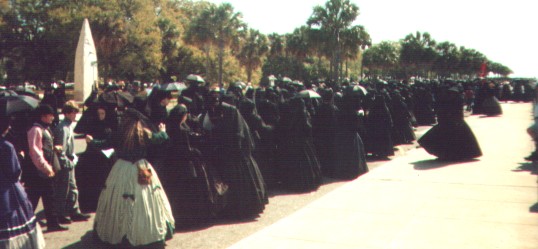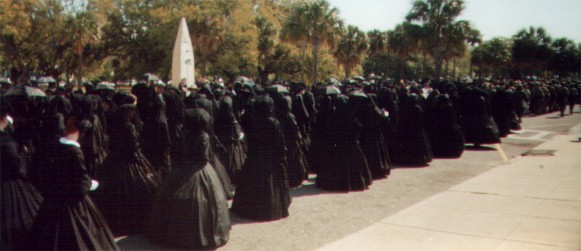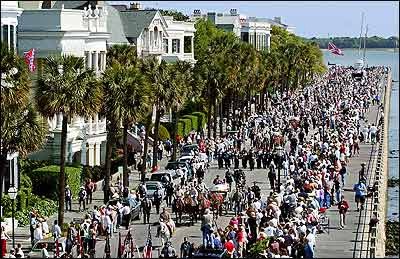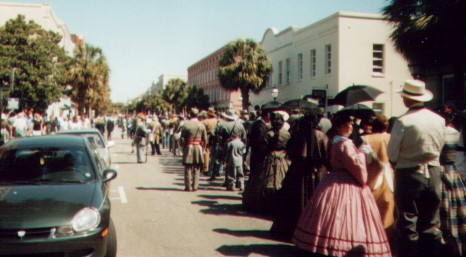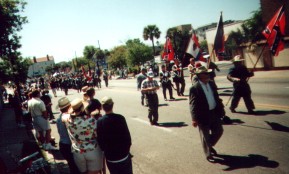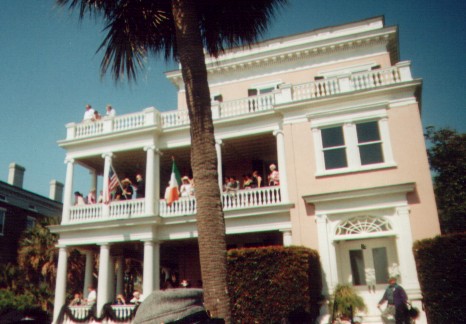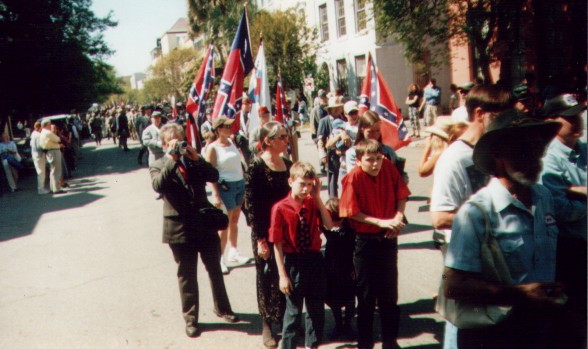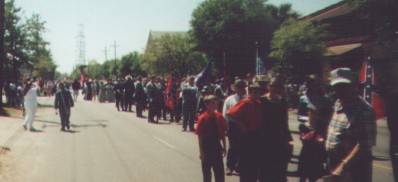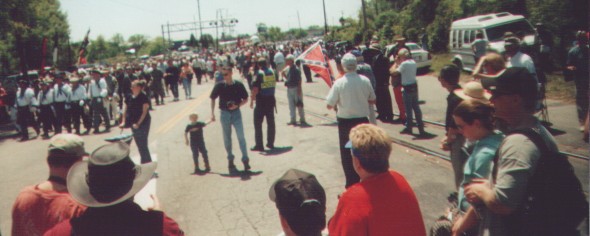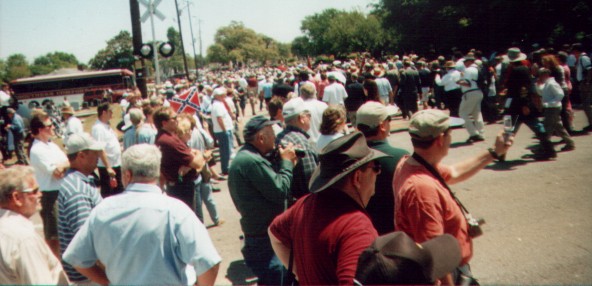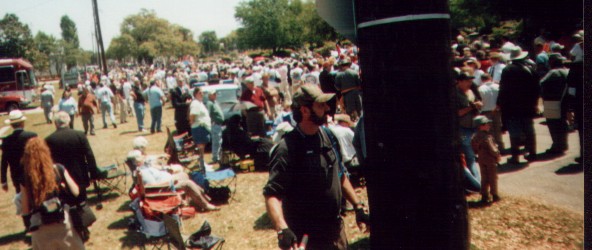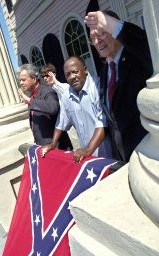As the procession left White Point Gardens,
the sight was quite impressive.
The horses pulled, the band played, the
pipes wailed and the drummers kept the
cadence.
The procession stretched for almost
two miles before anyone took the first step.
Charleston television station
WCBD and CNN Headline News both reported
over 75,000 total participants in the
day's events.
Other news outlets (including Fox TV
and The Atlanta Journal) reported numbers
as low as only a few thousand....
Late Saturday night, Geraldo reported
attendance as only "hundreds of
reenactors" with no mention of the
tens of thousands who were there...
Perhaps no other sight was
as moving to me as the hundreds
of ladies in mourning dresses.
This photo and the one above
shows them as they fell into the
procession.
As the procession entered the
downtown area, there were
thousands of onlookers lining
both sides of the street.
The following pictures (below)
show the procession as it moved
along.
At nearly all the houses along
the route there were people
on balconies, porches and roofs
watching and waving. Example at right.
The one below shows South Carolina
State Senator Arthur Ravenel
(far right-below), who was very
visible and spoke to us as we passed.
Political correctness and timidity kept
most politicians away from the event
however.
None of the 14 southern
governors who were invited attended.
( It would be hard to imagine the late
Senators Strom Thurmond and Jesse
Helms declining such an invitation!)
At times the marchers got somewhat
spread out but would bunch up again
during one of the many frequent
stops.
At right are Metter's Dixie
Guards representatives:
(left to right):
Randy Crooms, Robert Franklin,
Tony Thompson, Kelly Franklin,
Jason Franklin, Ben Franklin,
Grady Franklin, Merrily Franklin,
and Jackie Wallace.
Not shown: James McNeely.
As the march left the waterfront
we headed into what can only
be called a somewhat "blighted"
area. There were still people on
the sidewalks and intersections
waving and talking.
Even through the government
housing projects, everyone
we met seemed pleasant and
respectful of the occasion.
Dozens of people watched
from bridge overpasses and
railroad trestles.
At one point we observed that
traffic was at a near standstill
on the bridge overhead.
Then we realized they were
all stopping to watch the
procession.
The picture at right shows
us nearing the turn off to
cemetery.
Shortly before this point,
a female police officer told
me she estimated over
30,000 people had passed by
her. There was still over
half mile of marchers behind
us.
As the second half of the
procession turned into
the cemetery the road
suddenly became jammed.
It was a real bottleneck.
Many people opted to not try
to enter the cemetery at
this point as it did not appear
you get anyone else in
there even with a shoe-horn.
The picture below
shows more of the crowd
at the cemetery entrance.
I was told later that the
road was eventually cleared
and that everyone who wished
to enter the cemetery was
able to do so.
As we waited at our
cars for our other
member,James
McNeely who
was taking pictures
in the cemetery, we
reflected on the day.
The walk was tiring
but we were aglow
in pride of the day.
We also had
the knowledge
that we had been part
of something very
important. On this day
well over fifty thousand of our
fellow Southerners had
honored valor, courage
and duty. It was
indeed a great day
for all Southerners.



